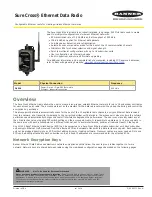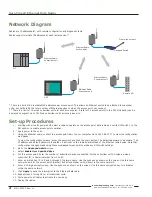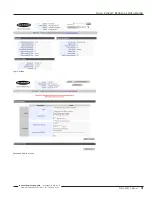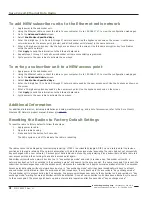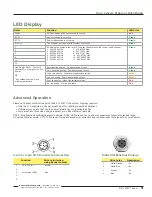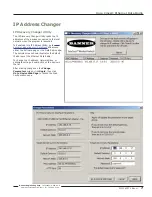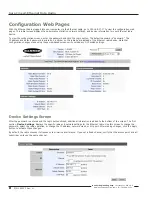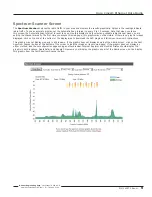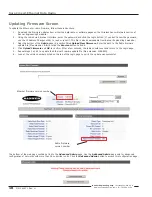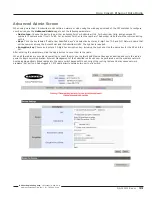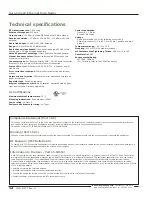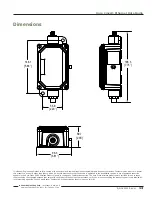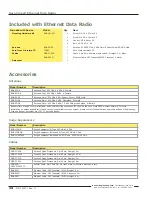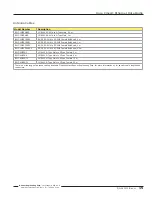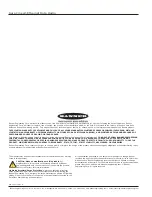
Banner Engineering Corp.
• Minneapolis, MN U.S.A
www.bannerengineering.com • Tel: 763.544.3164
4
P/N 140371 Rev. H
Sure Cross® Ethernet Data Radio
To add NEW subscriber units to the Ethernet radio network
1. Apply power to the subscriber unit.
2.
Using the Ethernet cable, connect the radio to your computer. Go to 192.168.17.17 to view the configuration web pages.
3. Go to the
Advanced Admin
screen.
4. Select
Enable User Specified Keys
.
5. Enter the 8-digit hex (0 to 9 and A through F) network name. Use the hyphens as shown on the screen. Use the same
network name for the access point (master) and all subscriber units (slaves) in the same network.
6. Enter a 32-digit encryption key. Use the hyphens as shown on the screen. Use this same encryption key for all radios
within the same network.
7. Click
Apply
to send the information to the Ethernet data radio.
8. Repeat steps 1 through 7 until all new subscriber units are successfully programmed.
9. Cycle power to the new radios to activate the new keys.
To re-key a subscriber unit to a NEW access point
1. Apply power to the subscriber unit.
2.
Using the Ethernet cable, connect the radio to your computer. Go to 192.168.17.17 to view the configuration web pages.
3. Go to the
Advanced Admin
screen.
4. Select
Enable User Specified Keys
.
5. Enter the 8-digit hex (0 to 9 and A through F) network name used by the new access point. Use the hyphens as shown on
the screen.
6. Enter a 32-digit encryption key used by the new access point. Use the hyphens as shown on the screen.
7. Click
Apply
to send the information to the Ethernet data radio.
8. Cycle power to the new radio to activate the new keys.
The radios cannot be damaged by incorrect programming. If DIP 1 is accidentally toggled, DIP 1 can be returned to its previous
position and the radio retains all the network associations it had in its previous mode (assuming the radio had not yet successfully
key exchanged with a new network). A access point data radio can be reset by programming it as a subscriber unit data radio to a
new access point and then turning it back into a access point again.
Subscriber units without a network key boot up in “key exchange mode” and wait to receive a key. Subscriber units with a
network key boot up for five seconds in “key exchange mode” and search for the access point. If a new access point is present, the
subscriber unit exchanges keys with the access point; otherwise the subscriber unit begins normal operation after the five seconds.
Access point data radios without network keys boot up in “key exchange mode” until they have issued network keys to at least
one subscriber unit data radio. Once the access point has issued keys, it only boots up for five seconds in “key exchange mode.”
If a subscriber unit is present during the five seconds, the access point issues new keys to the subscriber unit and remains in “key
exchange mode,” waiting for more subscriber units to be attached. Once all new subscriber units have been attached, cycle power
to the access point. The access point boots up and enters normal operation after five seconds of “key exchange mode.”
Additional Information
For additional information, including installation and setup, weatherproofing, and a list of accessories, refer to the Sure Cross®
Wireless I/O Network product manual, Banner p/n
132607
.
Resetting the Radios to Factory Default Settings
To reset the radio to factory defaults, follow these steps:
1. Apply power to radio.
2. Open the radio housing.
3. Press and hold the button for 5 seconds.
The LEDs cycle on and off to indicate the radio is rebooting.

